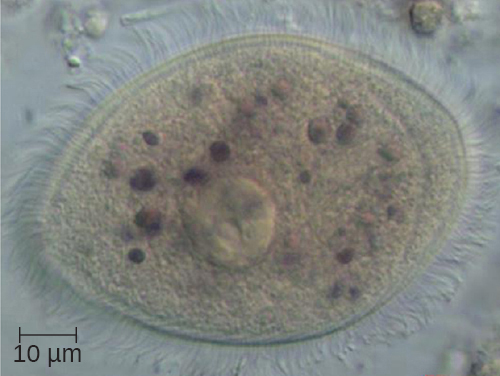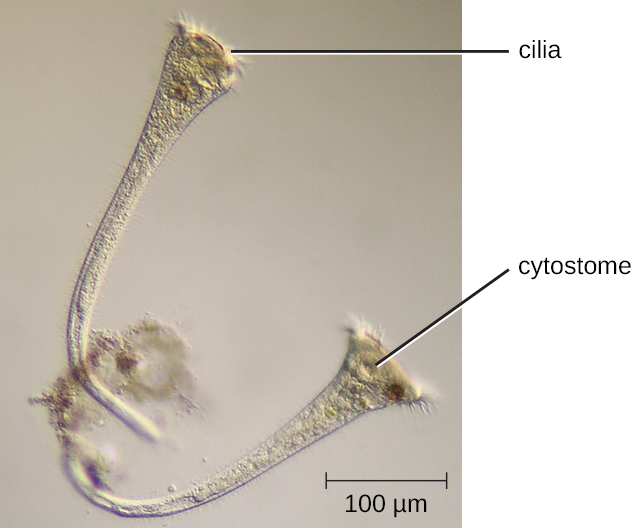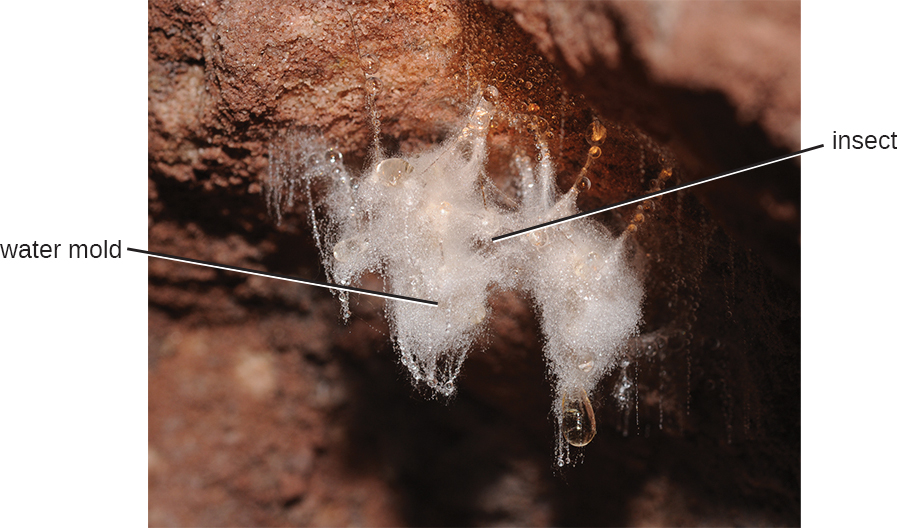| << Chapter < Page | Chapter >> Page > |



Öomycetes have similarities to fungi and were once classified with them. They are also called water molds . However, they differ from fungi in several important ways. Öomycetes have cell walls of cellulose (unlike the chitinous cell walls of fungi) and they are generally diploid, whereas the dominant life forms of fungi are typically haploid. Phytophthora , the plant pathogen found in the soil that caused the Irish potato famine , is classified within this group ( [link] ).

Explore the procedures for detecting the presence of an apicomplexan in a public water supply, at this website.
This video shows the feeding of Stentor .
The third and final supergroup to be considered in this section is the Excavata, which includes primitive eukaryotes and many parasites with limited metabolic abilities. These organisms have complex cell shapes and structures, often including a depression on the surface of the cell called an excavate. The group Excavata includes the subgroups Fornicata , Parabasalia , and Euglenozoa . The Fornicata lack mitochondria but have flagella. This group includes Giardia lamblia (also known as G. intestinalis or G. duodenalis) , a widespread pathogen that causes diarrheal illness and can be spread through cysts from feces that contaminate water supplies ( [link] ). Parabasalia are frequent animal endosymbionts; they live in the guts of animals like termites and cockroaches. They have basal bodies and modified mitochondria (kinetoplastids). They also have a large, complex cell structure with an undulating membrane and often have many flagella. The trichomonads (a subgroup of the Parabasalia) include pathogens such as Trichomonas vaginalis , which causes the human sexually transmitted disease trichomoniasis . Trichomoniasis often does not cause symptoms in men, but men are able to transmit the infection. In women, it causes vaginal discomfort and discharge and may cause complications in pregnancy if left untreated.
The Euglenozoa are common in the environment and include photosynthetic and nonphotosynthetic species. Members of the genus Euglena are typically not pathogenic. Their cells have two flagella, a pellicle , a stigma (eyespot) to sense light, and chloroplasts for photosynthesis ( [link] ). The pellicle of Euglena is made of a series of protein bands surrounding the cell; it supports the cell membrane and gives the cell shape.

Notification Switch
Would you like to follow the 'Microbiology' conversation and receive update notifications?